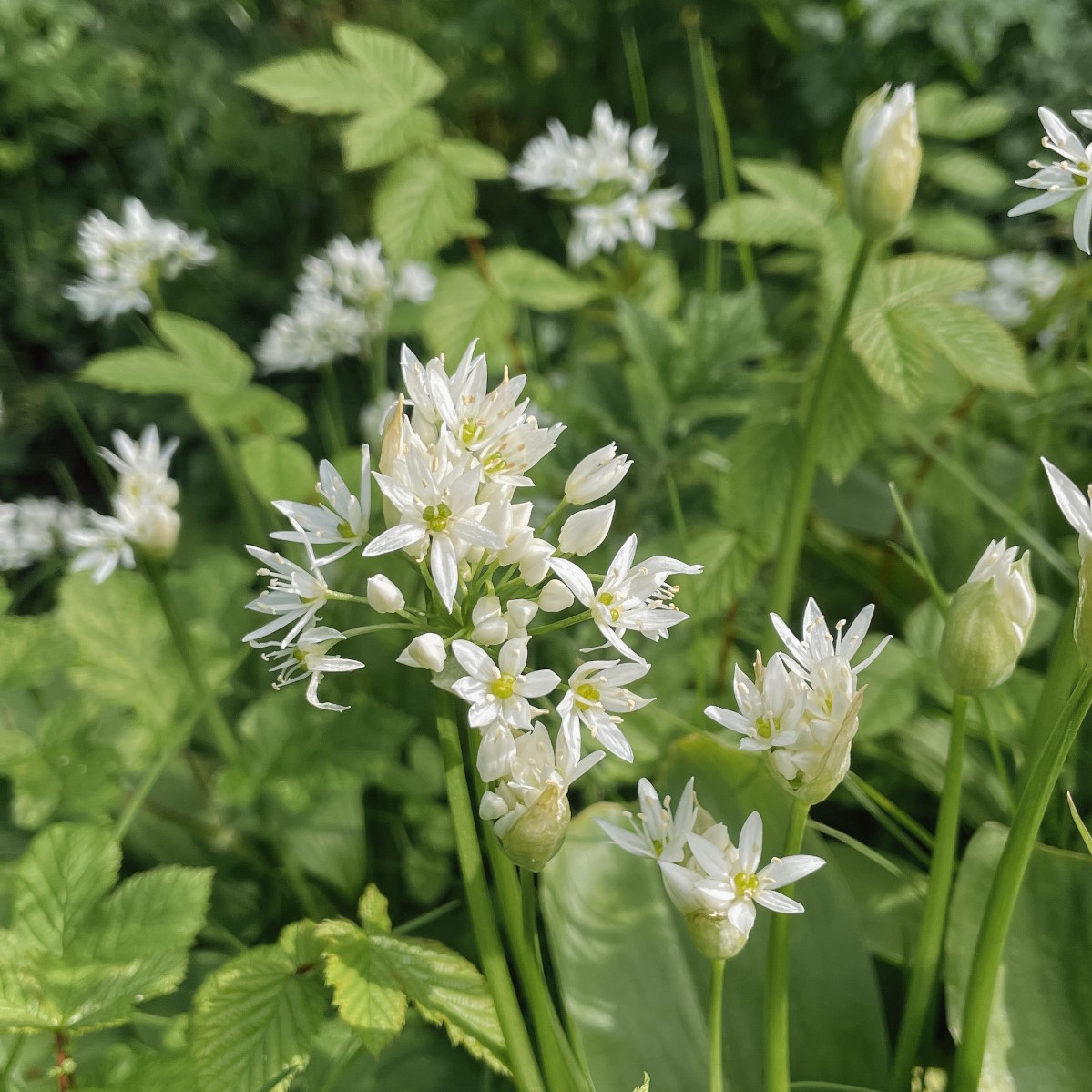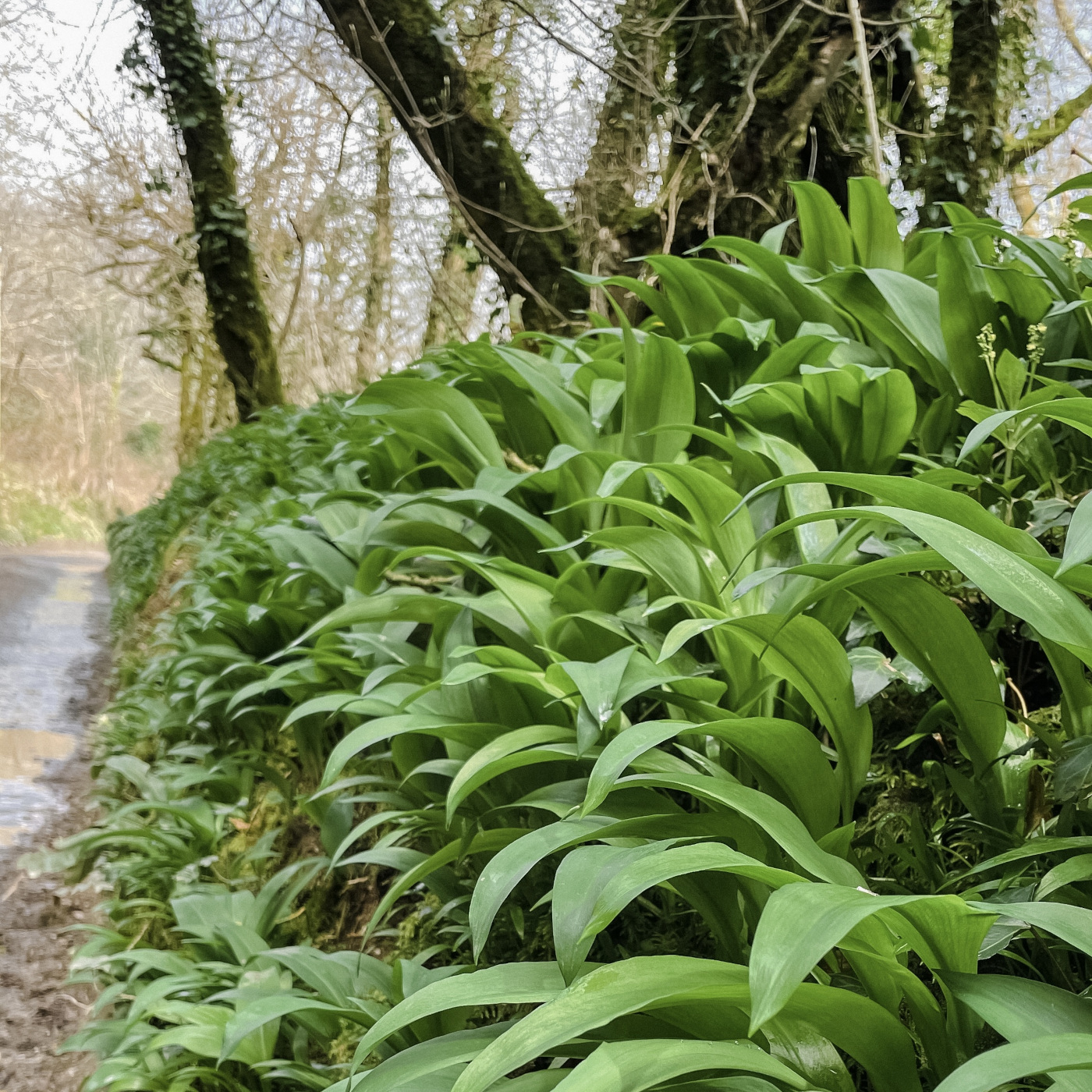You have no items in your cart. Want to get some nice things?
Go shopping
Wild garlic is one of the slow food highlights of spring. Carpeting the floor of woodlands from late winter through June, the fragrant allium ursinum plant is easy to identify thanks to its strong scent. Wild garlic is a more delicate alternative to normal garlic cloves and is delicious when whipped up into pesto.
Below, you’ll find our tips for how to forage and harvest wild garlic responsibly, plus our favourite recipe ideas for using up those fragrant leaves.
When is wild garlic in season?
Wild garlic is in season from March to June in the UK. The flowers appear in April to June and can be an attractive addition to seasonal salads. Wild garlic leaves are at their best for eating earlier in the season.
How to identify wild garlic
Wild garlic can be found in damp woodlands and hedgerows in spring. It thrives on the sunlight that reaches the woodland floor before the trees above have grown their full canopy of leaves. You’ll be more likely to find wild garlic in deciduous woodland and growing on chalky soils. Finding wild garlic is also a sign that the woodland is ancient – these woodlands are some of our most complex and biodiverse habitats.


The leaves of wild garlic are long and pointed. They grow from the plant base and have a strong garlic scent. Wild garlic also has white flowers. A rounded cluster of flowers sits upon a single, leafless talk. There should be around 25 small white flowers on each cluster.
When identifying and picking wild garlic, the smell should be the telltale sign that you’ve found the right plant. However, take extra care to not confuse wild garlic with lily-of-the-valley – this is poisonous. It’s easily distinguishable as lily-of-the-valley has two or three leaves on its stem, whereas the leaves of wild garlic grow from the base of the plant. In flower, lily-of-the-valley has bell-shaped white flowers.
While the flowers can help you identify wild garlic, the plant is actually at its best for cooking and eating before the flowers bloom when the leaves are young. Don’t worry though, the flowers are edible too!
Other names for wild garlic: ramson, buckram, broad-leaved garlic, wood garlic, bear leek, bear’s garlic
How to harvest wild garlic
- Pick long leaves that are a vibrant green colour
- Harvest the leaves from close to the base of the plant
- Do not uproot the plant or bulb – it’s illegal to dig up or remove a plant without permission from the landowner or occupier under the Wildlife and Countryside Act (1981)
- Follow foraging guidelines – seek permission, only pick in areas where the plant is in abundance, leave plenty behind – only take a small amount for personal use, and be mindful about damaging or disturbing wildlife
Celebrating the seasons and slow food means reveling in the freshest local ingredients. Part of the joy of seasonal living is the act of responsible foraging, but if you’re keen to eat in season and can’t take part, you can often buy wild garlic from Waitrose and Riverford Organic in spring.
How to preserve wild garlic
You can store wild garlic in the salad drawer of your fridge for a day or two after harvesting. The flowers are best used on the day they have been picked.
To make wild garlic leaves last a little longer and avoid food waste, you can freeze them or infuse them in oil. Wild garlic pesto will last a week or two in the fridge.
How to use wild garlic: recipes
While you can eat the leaves raw, wild garlic pesto is one of the most popular, and easiest, ways to use them up. Try our wild garlic pesto recipe and stir through pasta, add to risottos, soups, sandwiches and more. You can also treat wild garlic leaves like spinach and wilt them.
- Wild garlic oil
- Wild garlic, potato and chorizo tortilla
- Wild garlic and potato soup
- Wild garlic and Gruyère scones
What’s the difference between wild garlic and garlic?
Wild garlic is mellower than the garlic you may be familiar with buying in the supermarket or growing at home. The leaves are more delicate and sweeter than garlic gloves, but early in the season, when the leaves are freshest, they may be tend to be at their strongest.
Celebrate spring with our seasonal living guides:
